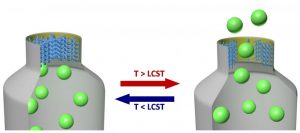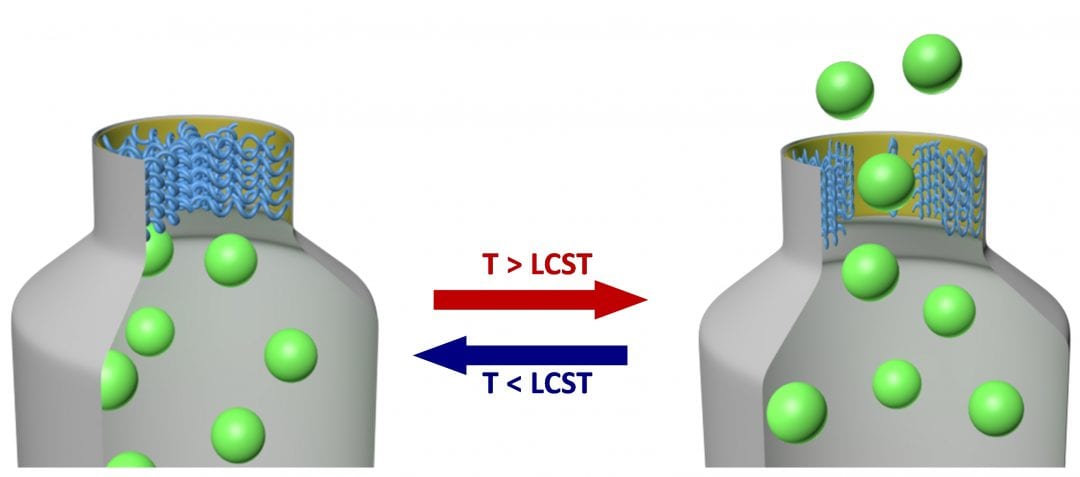 The in-situ detection of bacterial infections in wounds is essential for a quick action against the corresponding pathogenic bacteria. One local indicator for a bacterial infection is an increase in wound temperature. This indicator can be used to trigger nanoscale compartments with temperature-responsive gates, which are at low temperatures in the closed state and open up, if the temperature in infected wounds is increased, thereby releasing signaling antimicrobial agents.
The in-situ detection of bacterial infections in wounds is essential for a quick action against the corresponding pathogenic bacteria. One local indicator for a bacterial infection is an increase in wound temperature. This indicator can be used to trigger nanoscale compartments with temperature-responsive gates, which are at low temperatures in the closed state and open up, if the temperature in infected wounds is increased, thereby releasing signaling antimicrobial agents.
In a recent work, Nicolas H. Voelcker, Holger Schönherr, and their teams describe a prototype theranostic device based on thermally triggered release of a fluorescent antibiotic from polymer coated porous silicon films.
The porous silicon films possess a high surface-to-volume ratio and excellent biocompatibility. To obtain a larger volume for drug loading and to control the release, bottle-shaped pores were applied. The bottle-necks of the pores were functionalized with thermo-responsive poly(diethylene glycol methylether methacrylate) (PDEGMA) brushes, synthesized via atom transfer radical polymerization, to trigger the gated release of the fluorescent antimicrobial dye levofloxacin by varying the temperature. PDEGMA brushes exhibit a lower critical solution temperature (LCST) close to physiological temperatures. Below the LCST the PDEGMA brushes are expanded and thus the release of levofloxacin is retarded. Above the LCST the PDEGMA brushes collapse and levofloxacin is rapidly released.
In the study, the release of levofloxacin in solution was determined by fluorescence spectroscopy and it was shown that the initial release rate is 9-fold higher above the LCST than below. Finally, the loaded bottle-neck pores showed above the LCST an efficient inhibition of bacterial growth of the pathogenic bacteria Staphylococcus aureus and Escherichia coli, which was quantified by dilution steps to minimal inhibitory concentration tests.
This proof of concept study shows that the release from porous silicon films can indeed be temperature-triggered after functionalization with PDEGMA brushes.

















